It looks like you're using an Ad Blocker.
Please white-list or disable AboveTopSecret.com in your ad-blocking tool.
Thank you.
Some features of ATS will be disabled while you continue to use an ad-blocker.
share:
The Chachapoya of the Peruvian highlands were an enigmatic group refered to as 'the cloud people', they appear to have inhabited the region for a
couple of millenia thereabouts, but their origins were probably Andean.
They were noted as being white in appearance, and tall, i'll first give a rundown of the general information on them, and then give a breakdown of my opinions on how they could relate to the general mystery surrounding Andean culture.
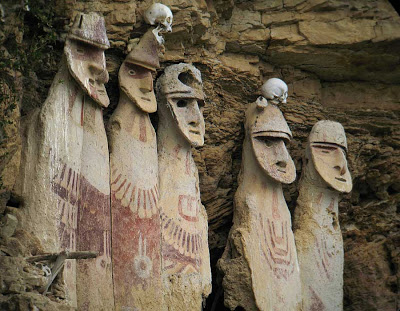
All quotes from this paper on the Chachapoya
museoleymebamba.org...
peruenroute.wordpress.com...
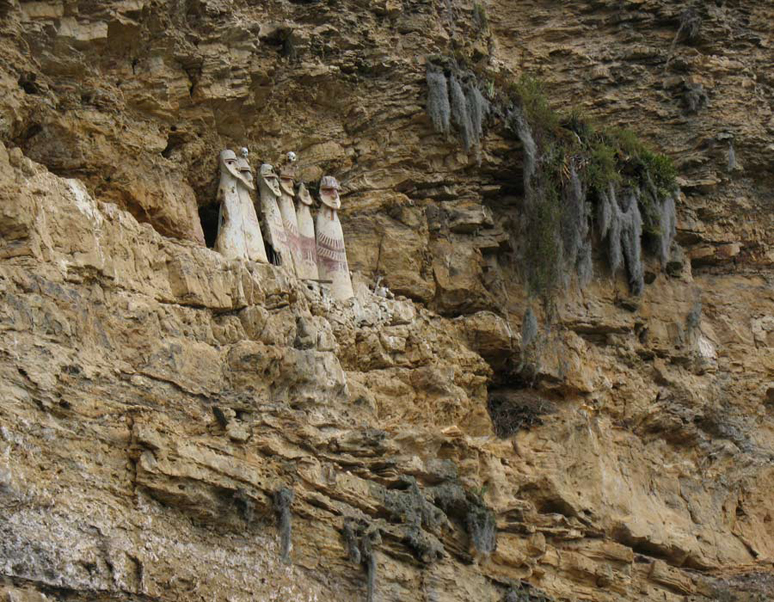
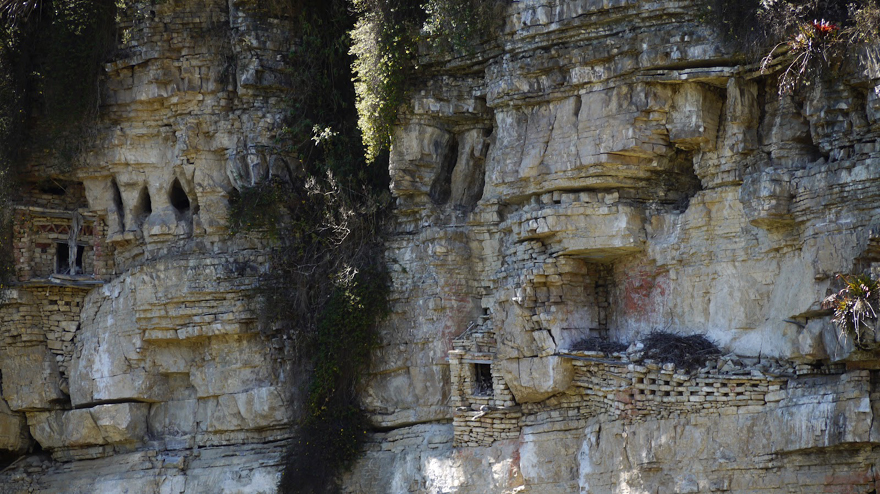
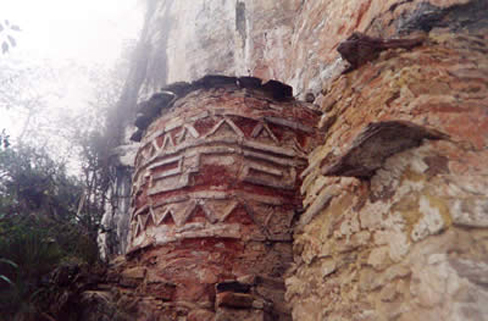
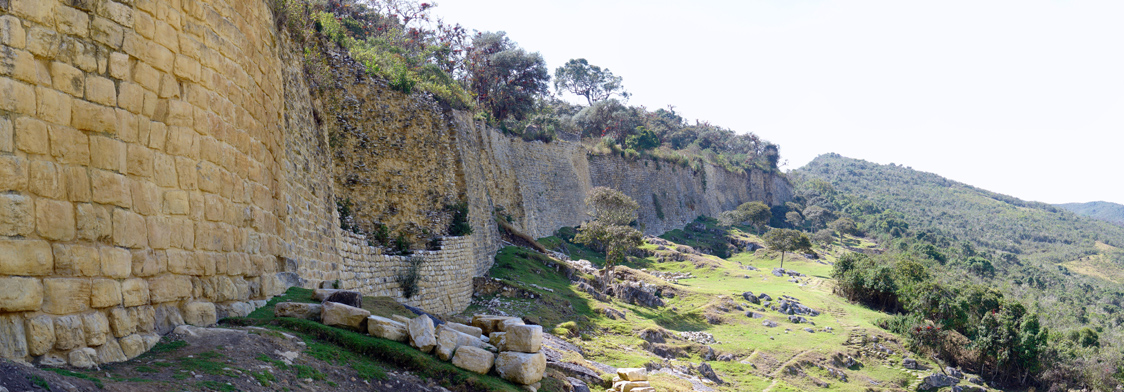

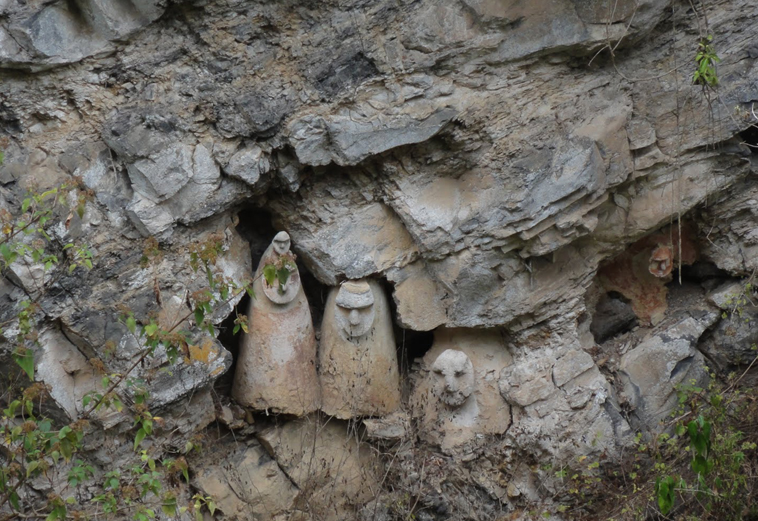
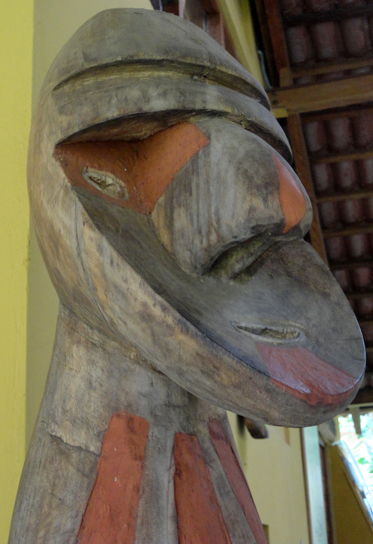
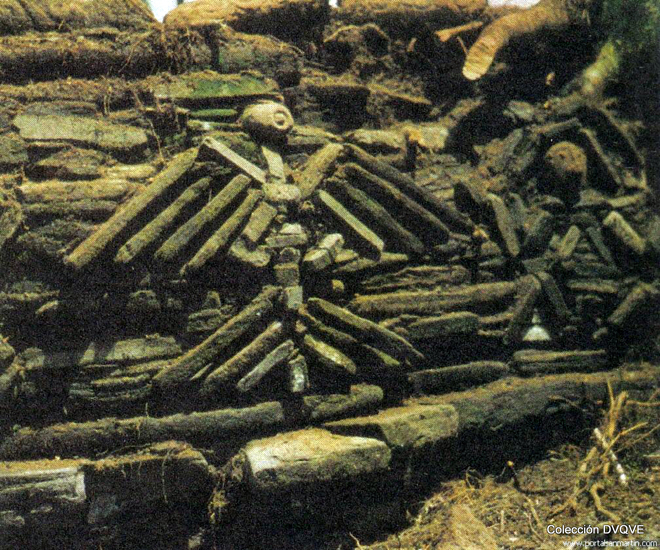
Their religious iconography of the condor and curious 'birth Goddess' is an extensive subject in itself and one that i can't cover here but will probably do so later in particular details.
What i want to concentrate on here is the representation of the burial idols, in conjunction with the facial characteristics of this ethnic group, as what led me to take an interest was a search for a culture that corresponded to certain carvings from Puma Punku showing striking features and a particular form of head dress.
Below is an Incan sculpture of a warrior wearing Chachapoya style headgear, in all probability a representation of a Chachapoya, this differs notably from general Incan portraiture
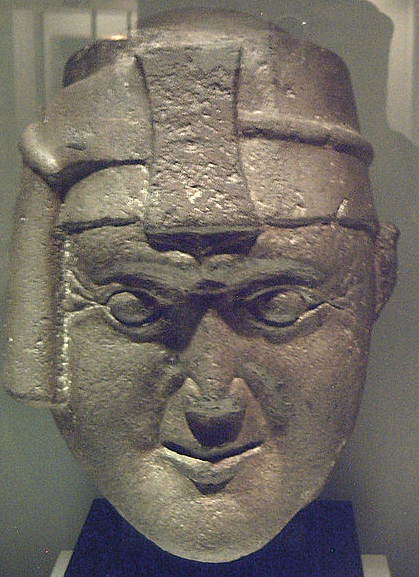
As i said, i was looking for a match to the types seen below that are from Puma Punku, despite being no longer in situ having been reused elsewhere in post colonial towns. The importance of these pieces is that they demonstrate what the builders of Puma Punku looked like, or at least their Gods after their own image as is generally the case.
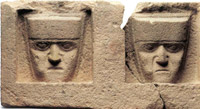
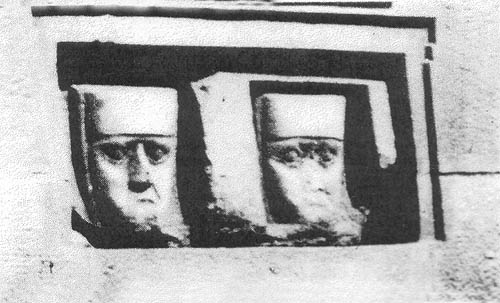
The quality of the carving and surrounding stone is such that they are consistent with the quality of Puma Punku, unlike similar styled heads from Tiwanaku which whilst derivative are of poor quality.
This then suggests a match to me between the headgear and facial characteristics of the Chachapoya and those carvings which best indicate the appearance of those who constructed Puma Punku, and yet the general architectural style of the Chachapoya and the quality of their stone working does not suggest any match, so i wouldn't suggest they constructed Puma Punku.
A solution to this conundrum may perhaps involve a parent culture of Chachapoya having constructed Puma Punku, perhaps their Gods, involving a scenario were they left their former Andean homeland millenia ago, with origins closely linked to earlier developments.
The large idol at Tiwanaku shows consistency in style and quality with the best of Puma Punku and again must relate to the God of its creators, this again can be seen to share the general features and headgear of the Chachapoya, in a heavily stylized geometric form.
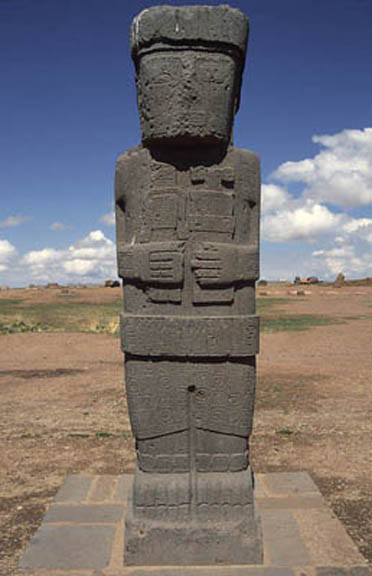
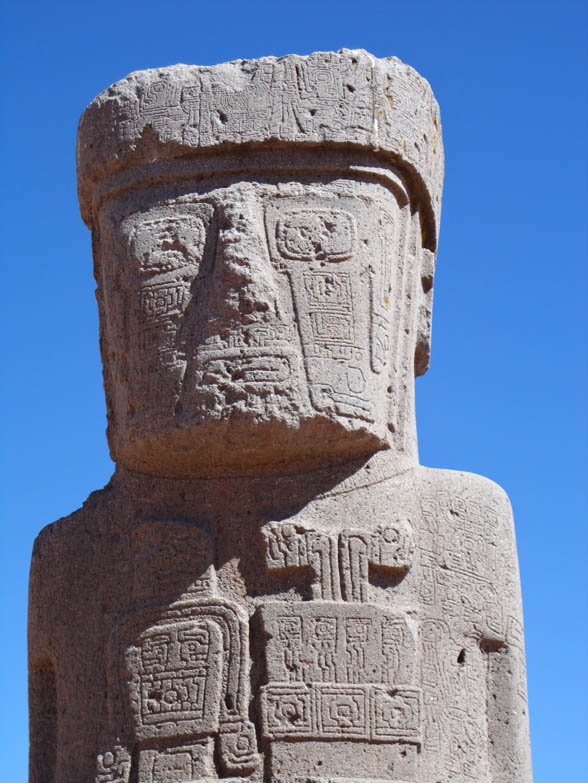
I would conclude then that there is an indirect relationship between the Chachapoya and Gods of Puma Punku.
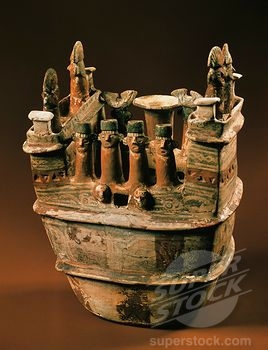
The best documentary on these people is in German, but has captions.
They were noted as being white in appearance, and tall, i'll first give a rundown of the general information on them, and then give a breakdown of my opinions on how they could relate to the general mystery surrounding Andean culture.

All quotes from this paper on the Chachapoya
museoleymebamba.org...
peruenroute.wordpress.com...
In a remote corner of northern Peru, the ancient Chachapoya once held sway over a vast
territory, today scattered with the distinctive remains of their trademark cliff tombs and
hamlets of circular structures. Feared warriors and famed shamans, the Chachapoya
flourished from around AD 800 until their violent conquest by the Inkas in the 1470s

The Chachapoya occupied a vast swath of the northern Peruvian Andes, embraced by
the Marañón to the west and the Huallaga to the east. Garcilaso noted that
Chachapoyas “is more than fifty leagues [250 kilometers] long and twenty [100
kilometers] broad

The evidence suggests that at times the ancient Chachapoya interacted with cultures
living to the east, west and north of the Marañón, while at other times they flourished in
relative isolation. Although the Chachapoya played a part in the greater Andean
cultural sphere, their art and architecture convey a bold and independent spirit that sets
them apart from their neighbors.

excavations at Gran Pajatén indicate that people began settling this
part of the cloud forest at the onset of what archaeologists call the Early Intermediate
Period, around AD 200, reinforcing the notion that the Chachapoya cultural tradition
evolved locally. Early pottery excavated in Manachaqui Cave points to links with
peoples to the east and to the north as early as 1500 BC, and ceramics dating to 900-400
BC resemble the pottery of southern Ecuador

Among the scattered colonial descriptions of Chachapoyas, almost all the
chroniclers commented on the beauty and white skin of the women. Even Father
Calancha succumbed to their beauty, noting, “These are the whitest and most graceful
Indians in all the Indies, and the women are the most beautiful.” Cieza, a usually
levelheaded observer, mentions the whiteness of Chachapoya women’s skin three times
in his brief description of Chachapoyas. “These Chachapoyas Indians are the whitest
and most attractive I have seen anywhere I have been in the Indies, and their women
were so beautiful that many of them were chosen to be the wives of the Inkas and the
vestals of the temples.”

Studies of pre-Inka Chachapoya skeletal remains from Salsipuedes and other burial
sites indicate that the Chachapoya were of Andean stock but, on average, taller than
their contemporaries in other parts of ancient Peru (1.59 meters for men and 1.46 meters
for women). Analysis of the skeletal remains from Los Pinchudos confirms the trend.

The Chachapoya buried their dead in a variety of structures, ranging from funerary capsules known as purunmachus to above ground stone tombs called chullpas. Some chullpas are set in rows, like those at Laguna de los Cóndores, while others are single constructions poised in hard to reach locations.

In some cases, such as Laguna de los Cóndores and Laguna Huayabamba, the tombs overlook lakes that ancient people probably venerated as pacariscas, or places of origin. The tombs also overlooked the communities of the living. In this fashion, the dead not only looked out over the birthplace of their ancestors, but watched over their descendants as well. Offerings of food and evidence that mummies were covered in new burial wrappings indicate that people visited the tombs, a widespread ancient Andean practice
Purunmachus stand on ledges protected from the weather either on their own, in small clusters ranging from four to eight or even in groups of 15 to 20.

Their religious iconography of the condor and curious 'birth Goddess' is an extensive subject in itself and one that i can't cover here but will probably do so later in particular details.
What i want to concentrate on here is the representation of the burial idols, in conjunction with the facial characteristics of this ethnic group, as what led me to take an interest was a search for a culture that corresponded to certain carvings from Puma Punku showing striking features and a particular form of head dress.
Below is an Incan sculpture of a warrior wearing Chachapoya style headgear, in all probability a representation of a Chachapoya, this differs notably from general Incan portraiture

As i said, i was looking for a match to the types seen below that are from Puma Punku, despite being no longer in situ having been reused elsewhere in post colonial towns. The importance of these pieces is that they demonstrate what the builders of Puma Punku looked like, or at least their Gods after their own image as is generally the case.


The quality of the carving and surrounding stone is such that they are consistent with the quality of Puma Punku, unlike similar styled heads from Tiwanaku which whilst derivative are of poor quality.
This then suggests a match to me between the headgear and facial characteristics of the Chachapoya and those carvings which best indicate the appearance of those who constructed Puma Punku, and yet the general architectural style of the Chachapoya and the quality of their stone working does not suggest any match, so i wouldn't suggest they constructed Puma Punku.
A solution to this conundrum may perhaps involve a parent culture of Chachapoya having constructed Puma Punku, perhaps their Gods, involving a scenario were they left their former Andean homeland millenia ago, with origins closely linked to earlier developments.
The large idol at Tiwanaku shows consistency in style and quality with the best of Puma Punku and again must relate to the God of its creators, this again can be seen to share the general features and headgear of the Chachapoya, in a heavily stylized geometric form.


I would conclude then that there is an indirect relationship between the Chachapoya and Gods of Puma Punku.

The best documentary on these people is in German, but has captions.
edit on 21-1-2013 by Kantzveldt because: (no reason given)
reply to post by IkNOwSTuff
That's a good point, it's unfortunate they don't appear to have left any quality images or sculptures of their fine womenfolk, just lots of grim idols...
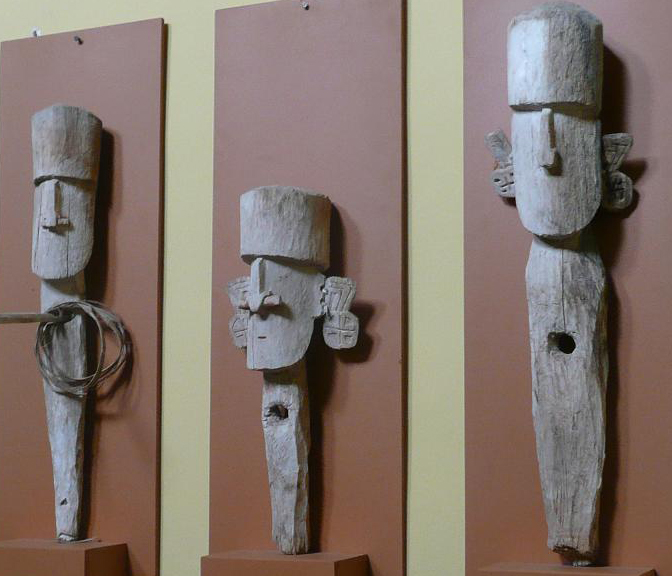
That's a good point, it's unfortunate they don't appear to have left any quality images or sculptures of their fine womenfolk, just lots of grim idols...

reply to post by Kantzveldt
I just want to say that you are a fantastic contributor to ATS.
Your thread OP's are so very well thought out and always leave me in awe.
You're a legend mate.
Like the viking feline said, I have nothing to add other than wonderment.
S&F.....as always
I just want to say that you are a fantastic contributor to ATS.
Your thread OP's are so very well thought out and always leave me in awe.
You're a legend mate.
Like the viking feline said, I have nothing to add other than wonderment.
S&F.....as always
reply to post by Kantzveldt
S+F. Nice piece of work
Did you know that 'clouds' are mentioned in the Book of Enoch as well in Chapter 15 Verse 9 ?
Note The Greek word for "clouds" here, nephelas, may disguise a more ancient reading, Napheleim (Nephilim).
S+F. Nice piece of work
Did you know that 'clouds' are mentioned in the Book of Enoch as well in Chapter 15 Verse 9 ?
The spirits of the giants shall be like clouds, which shall oppress, corrupt, fall, content, and bruise upon earth.
Note The Greek word for "clouds" here, nephelas, may disguise a more ancient reading, Napheleim (Nephilim).
reply to post by Sublimecraft
Thanks, the images related to this culture also fill me with wonderment...
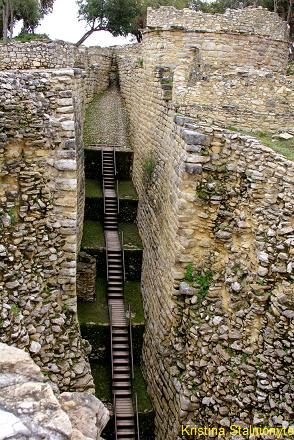
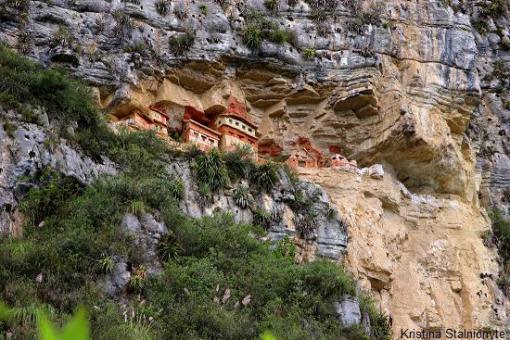
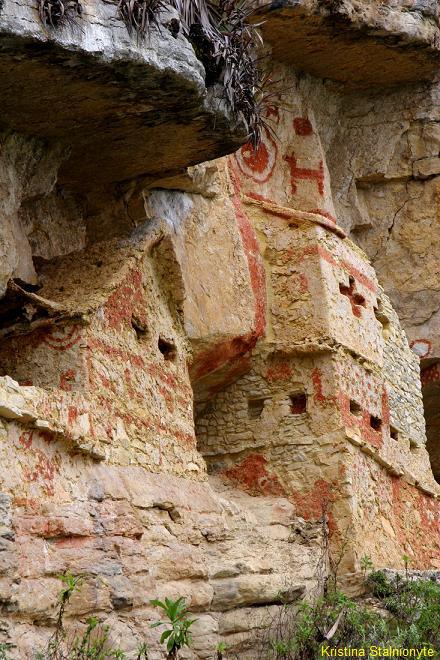
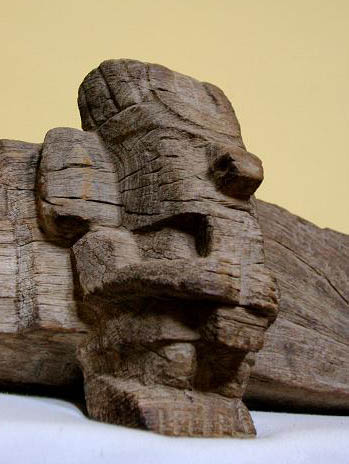
reply to post by Rapha
And then there are the Wandinja...
Thanks, the images related to this culture also fill me with wonderment...




reply to post by Rapha
And then there are the Wandinja...
edit on 21-1-2013 by Kantzveldt because: (no reason given)
Awesome thread. You, Slayer, Hanslune, Extralien, and a few others, keep me on the edge of my seat with this kind of stuff.
These were a curious people, and seemed out of place in their surroundings, given their description. White skinned? Blonde hair? This seems to lend some creedence to the "White, bearded gods" of the Maya and others. It makes me wonder how far their ancestry went back in the general area.
A very interesting hypothesis and possible connection with Puma Punku to be pondered. S&F.
These were a curious people, and seemed out of place in their surroundings, given their description. White skinned? Blonde hair? This seems to lend some creedence to the "White, bearded gods" of the Maya and others. It makes me wonder how far their ancestry went back in the general area.
A very interesting hypothesis and possible connection with Puma Punku to be pondered. S&F.
Hi Kanztvelt,
Awsome stuff,
Just this weekend I found a found a reference to these people in a genetics discussion.
I'll try to track it down.
My feeling is they could be the south American descendant of the Clovis culture, as there are references to certain tribes from the south east US, that were characterized as being of lighter complextion and taller than their neighbors. There is a local tribe that is markedly different than their neighbors, they are taller and lighter complected than their neighbors, and they have an ancestral connection to the Clovis culture.
I have also found andean myth that may be about these people, ill try to find that reference as well.
S & F
Awsome stuff,
Just this weekend I found a found a reference to these people in a genetics discussion.
I'll try to track it down.
My feeling is they could be the south American descendant of the Clovis culture, as there are references to certain tribes from the south east US, that were characterized as being of lighter complextion and taller than their neighbors. There is a local tribe that is markedly different than their neighbors, they are taller and lighter complected than their neighbors, and they have an ancestral connection to the Clovis culture.
I have also found andean myth that may be about these people, ill try to find that reference as well.
S & F
edit on 21-1-2013 by punkinworks10 because: (no reason given)
reply to post by punkinworks10
Thanks, i'd be very interested in seeing any research on the genetics involved, this site has a few images of supposed descendants, most look generally Andean, but there is a blonde haired girl, i don't know how common this trait still is.
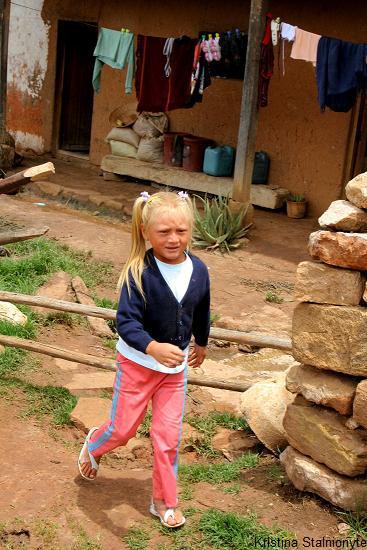
peruenroute.wordpress.com...
reply to post by Klassified
Yes it could lend some support to the bearded Gods scenario. Their architecture and general cultural style does seem out of place, i'm sure they've been claimed by the Mormons as evidence for their fairy tales, but i think the answer will be somewhat different.
I searched long and hard for a tribe that matched the facial characteristics and headwear of the Puma Punku carvings, and the style of their menhir idols, and this culture ticks all the boxes with no other coming close.
Thanks, i'd be very interested in seeing any research on the genetics involved, this site has a few images of supposed descendants, most look generally Andean, but there is a blonde haired girl, i don't know how common this trait still is.

peruenroute.wordpress.com...
reply to post by Klassified
Yes it could lend some support to the bearded Gods scenario. Their architecture and general cultural style does seem out of place, i'm sure they've been claimed by the Mormons as evidence for their fairy tales, but i think the answer will be somewhat different.
I searched long and hard for a tribe that matched the facial characteristics and headwear of the Puma Punku carvings, and the style of their menhir idols, and this culture ticks all the boxes with no other coming close.
edit on 21-1-2013 by Kantzveldt because: (no reason given)
Great thread Kandzveldt
S & F
i watched a documentary on the cloud people just last week on BBC FOUR here in the UK
it was called Lost Kingdoms Of South America
a very good doco and i reccomend to anyone who can access BBC IPLAYER, and anyone who can find the full episode on youtube
i did look but only found a trailer
S & F
i watched a documentary on the cloud people just last week on BBC FOUR here in the UK
it was called Lost Kingdoms Of South America
a very good doco and i reccomend to anyone who can access BBC IPLAYER, and anyone who can find the full episode on youtube
i did look but only found a trailer
I cant wait until someone finally makes sense of this giant ancient puzzle... I hope it happens in oue lifetimes
Interesting; the little girl shares similar facial features as the sculpture.


Pretty accurate I think.
Sorry a bit off topic I just thought it was pretty cool.


Pretty accurate I think.
Sorry a bit off topic I just thought it was pretty cool.
edit on 21-1-2013 by EL1A5 because: (no reason given)
reply to post by Kantzveldt
Wow thanks I didn't know about this.
Amazing! Sorry I don't have more to say atm, other than a pat on the back for informing me about things which I knew little to nothing of.
This isn't the first time you blew me away, so keep it up, this is a great pattern forming!
Will follow this thread, keep it real folks.
Wow thanks I didn't know about this.
Amazing! Sorry I don't have more to say atm, other than a pat on the back for informing me about things which I knew little to nothing of.
This isn't the first time you blew me away, so keep it up, this is a great pattern forming!
Will follow this thread, keep it real folks.
reply to post by Kantzveldt
Correct me if I am wrong but don't all humans share pretty much most of these types of visible traits like eye color etc, but the factor is that it is usually recessive in specific populations or alternatively, dominant in others?
*In reference to the blonde haired Andean child photographed.
Correct me if I am wrong but don't all humans share pretty much most of these types of visible traits like eye color etc, but the factor is that it is usually recessive in specific populations or alternatively, dominant in others?
*In reference to the blonde haired Andean child photographed.
reply to post by EL1A5
Yes it could be her Father in terms of likeness. An important point regarding these people is that their main cultic emphasis is on the archetypal ancestor iconography and their remarkable ancestral burial practises.
This association with the all important archetypal ancestor appears to have led them into not accepting any form of secular or spiritual hierarchy or even Pantheon of Deities, in that as descendants of this ancestor they should accept no ruler...this of course set them on a collision course with the Empire of the Inca.
Thus rather than seeing an idealized statue of the archetype as a God, they more probably saw him as an ancestor of the family, this directly influencing how they saw themselves..
reply to post by muzzleflash
No i don't think certain traits are commonly shared, though it is considered such mutations could arise independantly. In those terms it is considered genes for say blonde hair could have developed in more places than one and thus populations be found which haven't inherited it from a Eurasian ancestor.
But apart from the blonde hair facial features can be found in the region which are unlike the general Andean, and then there is the greater height also.

Yes it could be her Father in terms of likeness. An important point regarding these people is that their main cultic emphasis is on the archetypal ancestor iconography and their remarkable ancestral burial practises.
This association with the all important archetypal ancestor appears to have led them into not accepting any form of secular or spiritual hierarchy or even Pantheon of Deities, in that as descendants of this ancestor they should accept no ruler...this of course set them on a collision course with the Empire of the Inca.
Thus rather than seeing an idealized statue of the archetype as a God, they more probably saw him as an ancestor of the family, this directly influencing how they saw themselves..
reply to post by muzzleflash
No i don't think certain traits are commonly shared, though it is considered such mutations could arise independantly. In those terms it is considered genes for say blonde hair could have developed in more places than one and thus populations be found which haven't inherited it from a Eurasian ancestor.
But apart from the blonde hair facial features can be found in the region which are unlike the general Andean, and then there is the greater height also.

edit on 21-1-2013 by Kantzveldt because: (no reason given)
reply to post by muzzleflash
Hi Kanzveldt,
This isn't the study I found earlier, but it talks a little about them.
www.researchgate.net...
I also found this little tidbit,
www.vivatravelguides.com...
Hi Kanzveldt,
This isn't the study I found earlier, but it talks a little about them.
Archaeological and ethnohistorical documents suggest that the Chachapoya region was inhabited bya numberof distinct sociopolitical groups that only united in theface of their common enemy, the Inka. The purposeof this research is to quantify theamount of internal geneticdifferentiation and levels of extraregional geneflow during theLateChachapoya period, in order to obtain a betterunderstanding of the genetic relationship between thesepresumed ethnicgroups. Craniometricdata werecollected fromthree Late Chachapoya samples (Laguna Huayabamba, Kuelap, and Laguna delos Cóndores), in order to understand thegeneticrelationships between the groups and facilitate our understanding of Late Chachapoya population structure. Genetic differentiation among theseseries ranged from0.047 (heritability = 1.0) to 0.090 (heritability =0.55). TheRelethford-Blangero residuals indicatethat the Laguna Huayabamba and Laguna de los Cóndores populations were receiving greaterthan average external geneflow, whileKuelap was receiving less than averageexternal gene flow. Thecorrespondence between biological and archaeological data in theinvestigation of prehistoricethnic identityis discussed.
Source: PubMed
Dataprovided are for informational purposesonly.Although carefullycollected,
www.researchgate.net...
I also found this little tidbit,
Text Chachapoya architecture was engineered for its cloud-forest climate: “terraces” and cornices to channel water away from building foundations, steep thatch roofs to allow rain to run off. East of the Utcubamba River and south of Gran Vilaya, the stone buildings have intricate designs in zigzag and rhomboid shapes. Yálape, Kuélap and La Congona are examples of this.
The Chachapoya mummified their dearly departed. Using mummies, scientists have discovered the genetic markers that make the Chachapoya, described by the Spaniards as being white-skinned and distinct. Findings show the modern rural population is about 65% Chachapoya. Thirty descendent communities have been identified in Peru and Bolivia, thus proving the Inca massively relocated this "rebellious" nation. The greatest depletion of their populations, however, came with the Spaniards' diseases: within 200 years, over 90% of Chachapoya were decimated.
www.vivatravelguides.com...
reply to post by punkinworks10
Thanks for those, i''ve had a brief look around and those statistic based studies were all i came across also in terms of what is freely available.
There are also dental studies having been undertaken, these indicate that they were of standard Andean type, and owe nothing to Eurasians. This confirms my intuition that their traits resembling European arose independently in the Andean region, in conjunction with my hypothesis that this relates in some way to an ancestral archetype associated with Puma Punku...which only serves to provide more questions than answers.
Thanks for those, i''ve had a brief look around and those statistic based studies were all i came across also in terms of what is freely available.
There are also dental studies having been undertaken, these indicate that they were of standard Andean type, and owe nothing to Eurasians. This confirms my intuition that their traits resembling European arose independently in the Andean region, in conjunction with my hypothesis that this relates in some way to an ancestral archetype associated with Puma Punku...which only serves to provide more questions than answers.
Good one Kantz !
Here a couple of related threads I did some time ago, .
www.abovetopsecret.com...
www.abovetopsecret.com...
Here a couple of related threads I did some time ago, .
www.abovetopsecret.com...
www.abovetopsecret.com...
new topics
-
University of Texas Instantly Shuts Down Anti Israel Protests
Education and Media: 1 hours ago -
Any one suspicious of fever promotions events, major investor Goldman Sachs card only.
The Gray Area: 3 hours ago -
God's Righteousness is Greater than Our Wrath
Religion, Faith, And Theology: 7 hours ago -
Electrical tricks for saving money
Education and Media: 10 hours ago
top topics
-
VP's Secret Service agent brawls with other agents at Andrews
Mainstream News: 12 hours ago, 10 flags -
Cats Used as Live Bait to Train Ferocious Pitbulls in Illegal NYC Dogfighting
Social Issues and Civil Unrest: 16 hours ago, 8 flags -
Nearly 70% Of Americans Want Talks To End War In Ukraine
Political Issues: 13 hours ago, 4 flags -
Electrical tricks for saving money
Education and Media: 10 hours ago, 4 flags -
Sunak spinning the sickness figures
Other Current Events: 12 hours ago, 3 flags -
Late Night with the Devil - a really good unusual modern horror film.
Movies: 14 hours ago, 2 flags -
Any one suspicious of fever promotions events, major investor Goldman Sachs card only.
The Gray Area: 3 hours ago, 2 flags -
God's Righteousness is Greater than Our Wrath
Religion, Faith, And Theology: 7 hours ago, 0 flags -
University of Texas Instantly Shuts Down Anti Israel Protests
Education and Media: 1 hours ago, 0 flags
active topics
-
Late Night with the Devil - a really good unusual modern horror film.
Movies • 5 • : chiefsmom -
Nearly 70% Of Americans Want Talks To End War In Ukraine
Political Issues • 33 • : andy06shake -
Sunak spinning the sickness figures
Other Current Events • 11 • : McUrnsalso -
Any one suspicious of fever promotions events, major investor Goldman Sachs card only.
The Gray Area • 6 • : ImagoDei -
University of Texas Instantly Shuts Down Anti Israel Protests
Education and Media • 1 • : PorkChop96 -
Reason of the Existence
The Gray Area • 20 • : belkide -
Black mirror, what happened.
Television • 20 • : seekshelter -
God's Righteousness is Greater than Our Wrath
Religion, Faith, And Theology • 25 • : andy06shake -
Russia Ukraine Update Thread - part 3
World War Three • 5730 • : Arbitrageur -
VP's Secret Service agent brawls with other agents at Andrews
Mainstream News • 43 • : Hakaiju

